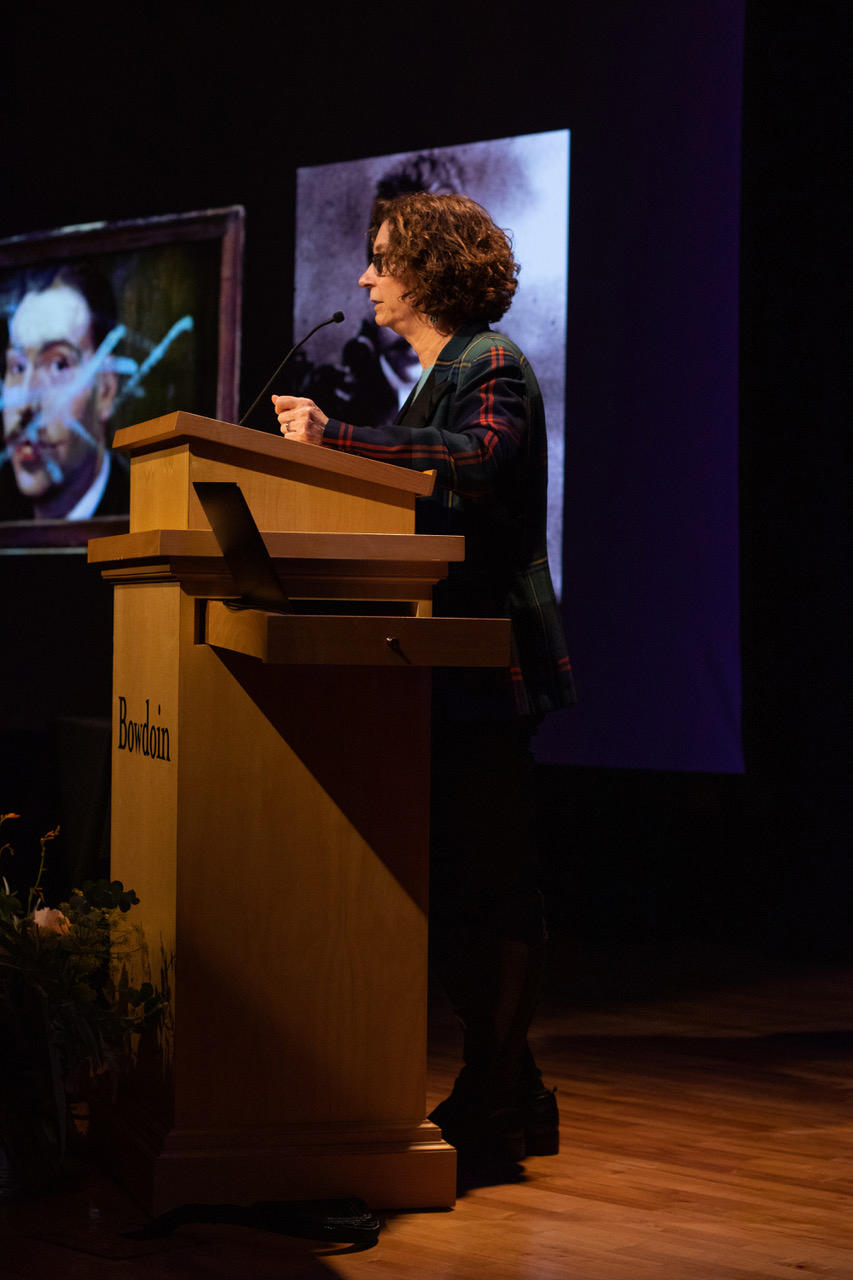Speakers highlight the historical significance of modernism exhibit
October 18, 2019
 Diego Velasquez
Diego VelasquezOver a century after its emergence, modern art is more relevant than ever. The movement often thought of in a strictly historical context is apparently less removed from our contemporary world than it appears.
In a presentation entitled “The Transnational Framework of Modernism’s Many Emergences, 1900-1950,” author and collector Laurette McCarthy and former Executive Editor of MIT Press Roger Conover ’72 discussed the history and impact of the exhibition, which was curated by the museum’s co-director, Anne Goodyear. The Bowdoin College Museum of Art (BCMA) hosted the event in conjunction with its ongoing exhibition, “Emerging Modernisms, American and European Art, 1900-1950.”
“My goal was to look carefully at Bowdoin’s own holdings. We are fortunate to have a number of really strong early 20th century artists represented in our collection—artists such as Alfred Stieglitz, Pablo Picasso [and] Marcel Duchamp,” Goodyear said before the presentation.
During their talk, the speakers presented on the history of modern art as it grew in the first half of the 20th century in tandem with the economic, social and political situation of the period. The exhibition and the talk explore the important shift that the world of art underwent at the turn of the century.
“That type of radical rethinking of what art is very much a key legacy of early 20th century modernism. I think that’s actually what I find most interesting,” Goodyear said. “There are a number of pressures coming together in the world, on intellectual, social and political [levels], that led to revolutions in how art is understood.”
“I would say that today, we are still in many ways sorting out many of the questions that these modern artists posed to us. And that’s why I organized this exhibition,” she continued.
According to Conover, modern art still has pertinence today.
“These modernisms deserve the epithet ‘avant garde,’ for these are more anxious, more precarious modernisms … so much in front of their time that they are only now just beginning to be noticed in our time. They fit more comfortably with this century’s postmodern tendencies than they did in their own century,” Conover said.
The talk focused on one of the modern art movement’s key actors, 20th century artist and critic Walter Pach. McCarthy shed light on his contributions to the world of modern art, and Conover laid the historical framework for the discussion of the art developing under Pach’s influence.
A little over a year ago, Bowdoin received an archive of Pach’s work, which Goodyear plans to make available to the public.
“We also have his library of his own publications, which have been annotated by him, in storage,” Goodyear said. “We’re really excited to make that archive available to the world. Pach’s paintings, his drawings, sketchbooks, prints and then also this amazing library of his publications.”
Goodyear emphasizes the exhibition’s importance for the College—particularly as it highlights the connection between the College and major figures in the art world.
“I think it’s really interesting that Walter Pach, as well as Roger Conover, both have really important ties back to Bowdoin, which in my view reflects on the power of the aesthetic and intellectual experimentation that this school can foster,” Goodyear said.

Comments
Before submitting a comment, please review our comment policy. Some key points from the policy: